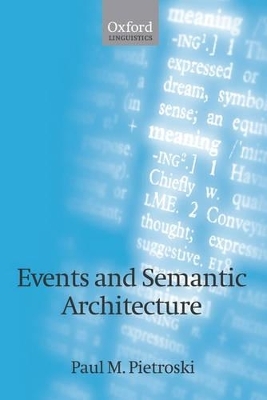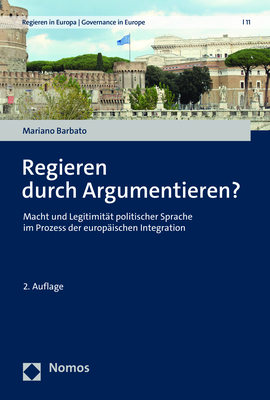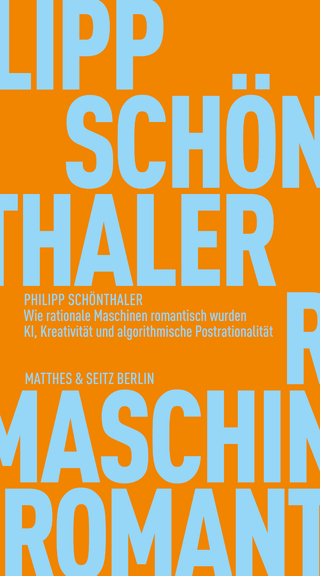
Events and Semantic Architecture
Seiten
2006
Oxford University Press (Verlag)
978-0-19-924431-7 (ISBN)
Oxford University Press (Verlag)
978-0-19-924431-7 (ISBN)
This book presents a unified theory of how grammar relates to meaning. Intended for scholars and graduate students of linguistics and philosophy it provides fresh ways of thinking about semantic generalizations that may reflect innately determined aspects of human languages.
This book explores how grammatical structure is related to meaning. The meaning of a phrase clearly depends on its constituent words and how they are combined. But how does structure contribute to meaning in natural language? Does combining adjectives with nouns (as in 'brown dog') differ semantically from combining verbs with adverbs (as in 'barked loudly')? What is the significance of combining verbs with names and quantificational expressions (as in 'Fido chased every cat')? In addressing such questions, Paul Pietroski develops a novel conception of linguistic meaning according to which the semantic contribution of combining expressions is simple and uniform across constructions.
Drawing on work at the heart of contemporary debates in linguistics and philosophy, the author argues that Donald Davidson's treatment of action sentences as event descriptions should be viewed as an instructive special case of a more general semantic theory. The unified theory covers a wide range of examples, including sentences that involve quantification, plurality, descriptions of complex causal processes, and verbs that take sentential complements. Professor Pietroski also provides fresh ways of thinking about much-discussed semantic generalizations that seem to reflect innately determined aspects of human languages.
Designed to be accessible to anyone with a basic knowledge of logic, Events and Semantic Architecture will interest advanced students of linguistics, philosophy, and cognitive science at graduate level and above.
This book explores how grammatical structure is related to meaning. The meaning of a phrase clearly depends on its constituent words and how they are combined. But how does structure contribute to meaning in natural language? Does combining adjectives with nouns (as in 'brown dog') differ semantically from combining verbs with adverbs (as in 'barked loudly')? What is the significance of combining verbs with names and quantificational expressions (as in 'Fido chased every cat')? In addressing such questions, Paul Pietroski develops a novel conception of linguistic meaning according to which the semantic contribution of combining expressions is simple and uniform across constructions.
Drawing on work at the heart of contemporary debates in linguistics and philosophy, the author argues that Donald Davidson's treatment of action sentences as event descriptions should be viewed as an instructive special case of a more general semantic theory. The unified theory covers a wide range of examples, including sentences that involve quantification, plurality, descriptions of complex causal processes, and verbs that take sentential complements. Professor Pietroski also provides fresh ways of thinking about much-discussed semantic generalizations that seem to reflect innately determined aspects of human languages.
Designed to be accessible to anyone with a basic knowledge of logic, Events and Semantic Architecture will interest advanced students of linguistics, philosophy, and cognitive science at graduate level and above.
Paul M. Pietroski is Professor of Philosophy and Professor of Linguistics at the University of Maryland. He is the author of Causing Actions (OUP 2000; paperback edition 2002) and many articles concerning the semantics of natural language.
Introduction ; 1. Elementary Cases ; 2. Quantification and Plurality ; 3. Causal Verbs and Sentential Complements ; Tentative Conclusions and Promissory Notes ; References ; Index
| Erscheint lt. Verlag | 20.7.2006 |
|---|---|
| Zusatzinfo | 4 line drawings and numerous mathematical symbols |
| Verlagsort | Oxford |
| Sprache | englisch |
| Maße | 156 x 233 mm |
| Gewicht | 432 g |
| Themenwelt | Geisteswissenschaften ► Philosophie ► Sprachphilosophie |
| Geisteswissenschaften ► Psychologie ► Verhaltenstherapie | |
| Geisteswissenschaften ► Sprach- / Literaturwissenschaft ► Sprachwissenschaft | |
| ISBN-10 | 0-19-924431-6 / 0199244316 |
| ISBN-13 | 978-0-19-924431-7 / 9780199244317 |
| Zustand | Neuware |
| Haben Sie eine Frage zum Produkt? |
Mehr entdecken
aus dem Bereich
aus dem Bereich
Macht und Legitimität politischer Sprache im Prozess der europäischen …
Buch | Softcover (2023)
Nomos (Verlag)
74,00 €
KI, Kreativität und algorithmische Postrationalität
Buch | Softcover (2024)
Matthes & Seitz Berlin (Verlag)
16,00 €
Wie die Menschheit zu ihrer größten Erfindung kam
Buch | Softcover (2022)
C.H.Beck (Verlag)
18,00 €


